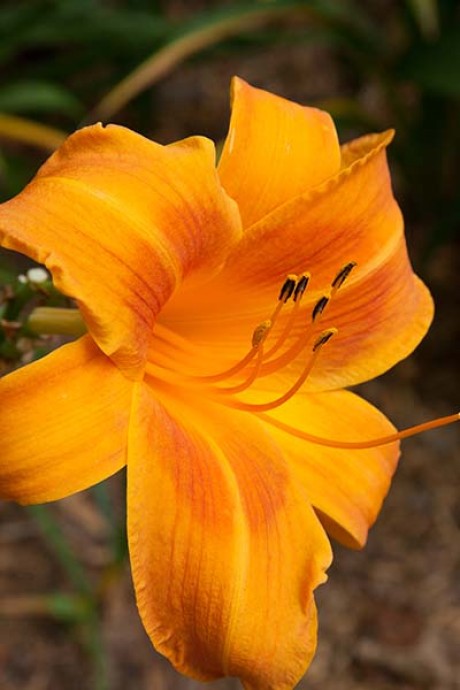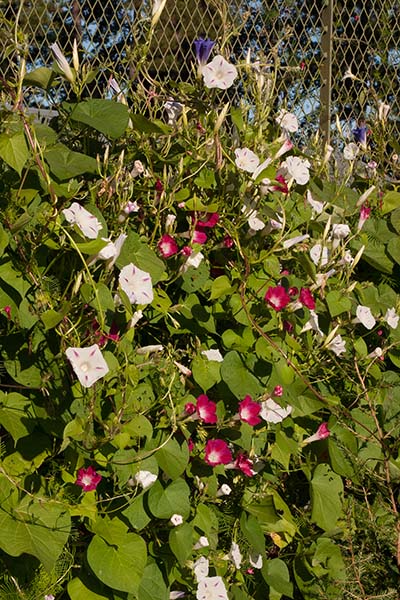Daylily nights
Plus Garden To-Do's for April and May
By L.A. JacksonDaylilies are so named because their lily-like flowers open early in the morning, spend the day basking in beauty, and then fade away as evening approaches.
But exceptions exist: night-blooming daylilies. This term might seem like an oxymoron conjured up from the realm of science fiction, but such plants are real — and they are very pretty oxymorons.
There are actually three types of night-blooming daylilies, all of which are listed below, along with a few cultivar examples that can be found either at local garden centers or online. So, grab a flashlight and enjoy!
Extended (often abbreviated “Ext.” in catalogs) Cultivars in this group unfurl early in the morning like regular daylilies, but their flowers remain open for 16 hours or more, meaning well past dark, even on the longest days of summer. The popular ‘Stella d’Oro’ with bright yellow flowers is the poster child for extended daylilies, but it has plenty of pretty company, including ‘Happy Returns’ (yellow blooms), ‘Rocket City’ (orange with reddish-orange throat), ‘Rosie Meyer’ (bright red petals with gold throat) and ‘Joan Senior’ (pale white with light yellow throat).
Nocturnal (“Noc.”) These true daylilies of the night have blossoms that open late in the day and last deep into the dark. ‘Citrina’ (also sold as Hemerocallis citrina), with its fragrant, butter yellow blooms is one of the better known nocturnals, and there are many more, including ‘Lady Grosvenor’ (cream-pink), ‘Pardon Me’ (flashy red with greenish-yellow throat) and ‘Flames of Fortune’ (apricot).
Extended Nocturnal (“Ext. Noc.”) As advertised, they are night-blooming daylilies that stay in flower at least 16 hours, meaning their blossoms will still be open to salute the rising sun and early morning. The popular ‘Black Eyed Stella’ (yellow with reddish throat) is probably the easiest to find in this group, but other similar beauties worth searching for include ‘Bone China’ (white with greenish-yellow throat), ‘Three Seasons’ (pale yellow) and ‘Misty Isle’ (light salmon pink).
To Do’s in the Garden
April
- The middle to the end of this month should be prime time to begin planting the veggie patch with warm-season edibles such as tomatoes, watermelons, cucumbers, green beans and squash.
- Azaleas, camellias, laurels, rhododendrons and wisteria are early spring bloomers that can be pruned after their flowers are spent. It is also a good time to fertilize these ornamentals to prepare them for next year’s flower show.
- If your azaleas, gardenias, hydrangeas, magnolias or rhododendrons have begun to look sickly with yellow leaves streaked by green veins, it could be a sign of iron chlorosis. This disorder can be cured with a light application of Epsom salt around the base of the afflicted plant.
- Go easy on applying excessive nitrogen to plants such as blackberry, cotoneaster, pear, apple, quince, raspberry and pyracantha, as new growth that develops too quickly will be susceptible to fire blight.
May
- It is gladioli planting time! The best location for the corms of these beauties is in a well-drained, sunny site protected from the wind. If the rains don’t come, water weekly after the spikes pop out of the ground. Summer-loving cannas, caladiums and dahlias can also be planted now.
- Have a constant need to feed your plants? Add nutrients at a controlled, safe rate by watering with compost tea or diluted fish emulsion once a month.
- With the heat beginning to build, the season of cool-season vegetables such as broccoli, collards, lettuce, spinach and kale is ending. Remove spent and bolting plants to provide more room for summer veggies.
- Want sweet rather than bitter cucumbers? Mulch the plants and put them on a regular watering schedule. Also, cukes don’t store well on the vine, so pick early and pick often.
-
Share this story:




